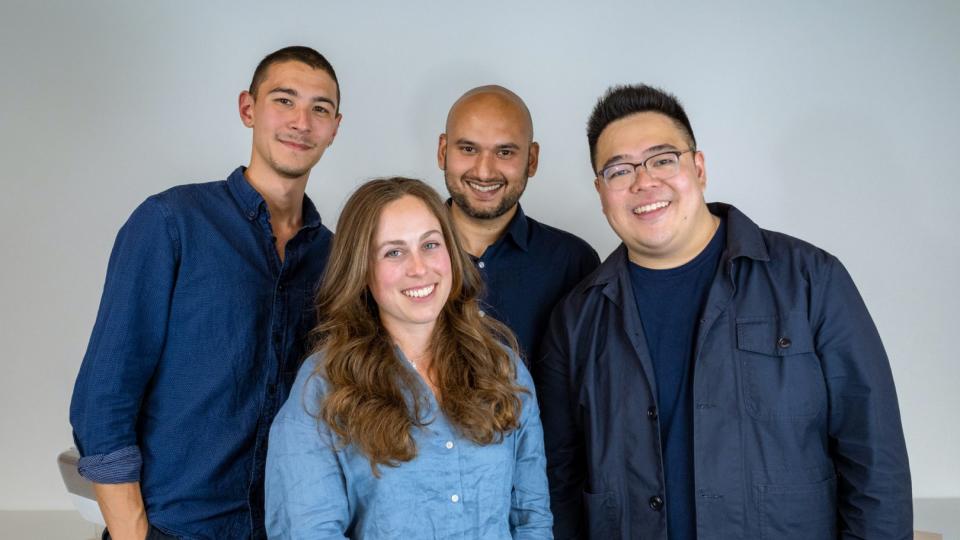Graduates come together to address one of the most ignored pollutants in the world

While much of the conversation surrounding plastic pollution has focused on the macroplastics that some of us may have negligently discarded during our time at the beach (water bottles and disposable grocery bags, for example), less attention has been paid to the microplastics — any plastic less than five millimeters in length — that we leave behind.
If you drive a car, chances are you’ve played a part in releasing microplastics into the air. Vehicle tires are made of rubber, carbon black, silica and metallic reinforcement cables, all of which contribute to the discharge.
The more you drive a car, the more frequently its tires will wear against whatever surface they’re on. And given the number of operating cars there are in the world (estimates put it at above 1 billion), the amount of microplastic particles that tires discharge is staggering.
Earlier this year, a study published by the journal Nature Communications revealed that about 6.1 million metric tons of microplastic particles are emitted by tire wear, 34 percent of which are deposited in the ocean. Not only are those particles consumed by marine life, but they also absorb light and “decrease the surface albedo of snow and ice, accelerating melting,” according to research.
Enter the Tyre Collective: a group of four graduates from the Imperial College London and the Royal College of Art.
In July 2019, the U.K. government set out to tackle air pollution by curbing the emissions of a number of pollutants, including “non-exhaust” particulate matter released by vehicles. In doing so, it put out a call for evidence, working with several groups to find a solution. Around the same time, Hanson Cheng, Hugo Richardson, Siobhan Anderson and Deepak Mallya drew from their experiences in engineering and design to come up with their own answer to the problem.
“We all realized that we had the same kind of passion to try and find something to help contribute to the environment and a more sustainable future,” Anderson told In The Know. “We started working together and ended up on this topic of microplastic pollution.”
Upon learning that tire wear was the second largest contributor to microplastic pollution (single-use plastics are the biggest contributor), Anderson and her team began studying how particles were emitted from tires. Their eureka moment came when one of them rubbed a balloon against their sweater and noticed that particles were jumping around and attracting one another.
“From there, it was just a lot of time in the day iterating and creating different prototypes until we ended up on our final one,” Anderson said of the team’s new device, which has reportedly collected 60 percent of all airborne particles from tires under a controlled environment. “It uses a combination of electrostatics and the airflow around the spinning wheel.”

Working with different departments at Imperial College London, members of the Tyre Collective spent three months on the project — initially in tandem with their studies, but later on as co-founders of a startup, Cheng said. The team produced two different models: one that serves as a proof of concept and the other as the final prototype (which, Cheng said, is “a retrofittable device to be put on existing vehicles to capture tire wear”).
More specifically, the prototype can be placed next to the point where the tire touches a surface. Electrostatics capture the particles, which are collected in a removable storage unit. The fragments are then processed and reused, creating what the team describes as a “closed loop system” in the process.
“We’ve been talking to tire manufacturers as well as automative manufacturers,” Cheng said. “There are sustainable tires being developed, but a full kind of adoption of that will take some time, so we see our device kind of positioned between now until when they’re adopted.”
For their work, the Tyre Collective won the national James Dyson award — a prestigious international design prize. Their device will be entered into an international contest for the final round of the top James Dyson award next month.
“I think, most of all, [the award] gave us a lot of validation to kind of tackle this issue of tire wear,” Cheng said. “We thought we were kind of the only ones who cared about it as much as others do.”
Anderson credits much of the group’s recent success to its diversity.
“Because of our background and different perspectives our team brings, we wouldn’t be here if it wasn’t for that,” she said. “It’s incredibly valuable to just be able to brainstorm on different things and have people bring different things to the table as well.”
Still, the job isn’t finished, Anderson and Cheng said. The U.K. has seen an increase in the use of electric vehicles, which will only further add to overall tire wear emissions due to the vehicles’ added battery weight and torque. The hope is that someday, the Tyre Collective’s invention will make its way onto the market and help significantly reduce microplastic pollution that all cars — including electric ones — produce.
“As we’re kind of going forward and taking more responsibility with this transition to a greener future, we have the opportunity now to really make changes and try and create vehicles that are zero-emission,” Anderson said. “These are things that we can think about and start implementing. That’s a huge opportunity for us to make a big difference.”
If you enjoyed this story, you might want to read about this man who upcycles ocean pollution into beautiful sculptures.
More from In The Know:
This solar-powered floating house can withstand Category 4 hurricanes
5 budget-friendly vacations you can plan this fall
Subscribe to our daily newsletter to stay In The Know
The post Graduates come together to address one of the most ignored pollutants in the world appeared first on In The Know.

 Yahoo Sport
Yahoo Sport 





































